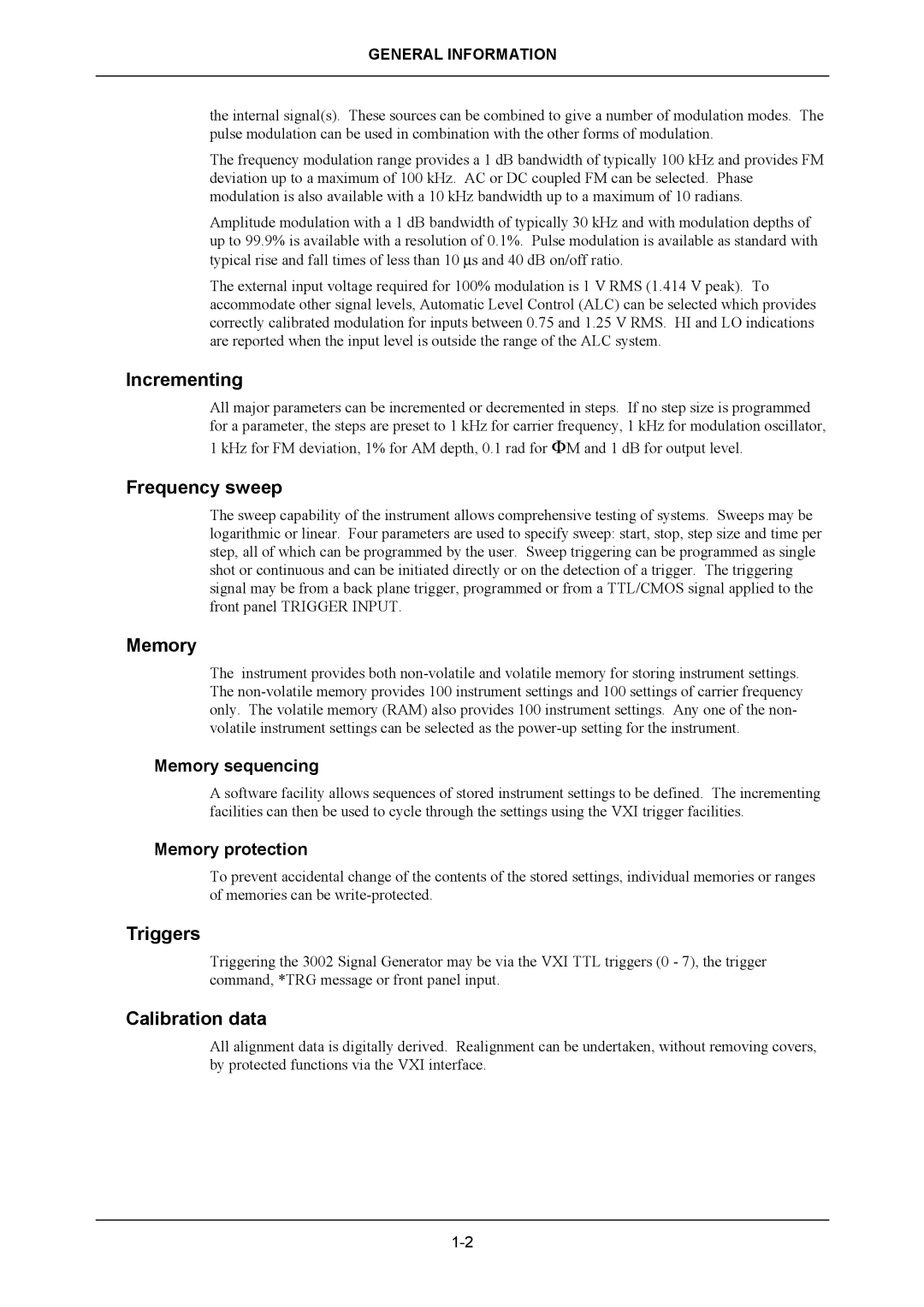
GENERAL INFORMATION
the internal signal(s). These sources can be combined to give a number of modulation modes. The pulse modulation can be used in combination with the other forms of modulation.
The frequency modulation range provides a 1 dB bandwidth of typically 100 kHz and provides FM deviation up to a maximum of 100 kHz. AC or DC coupled FM can be selected. Phase modulation is also available with a 10 kHz bandwidth up to a maximum of 10 radians.
Amplitude modulation with a 1 dB bandwidth of typically 30 kHz and with modulation depths of up to 99.9% is available with a resolution of 0.1%. Pulse modulation is available as standard with typical rise and fall times of less than 10 ∝s and 40 dB on/off ratio.
The external input voltage required for 100% modulation is 1 V RMS (1.414 V peak). To accommodate other signal levels, Automatic Level Control (ALC) can be selected which provides correctly calibrated modulation for inputs between 0.75 and 1.25 V RMS. HI and LO indications are reported when the input level is outside the range of the ALC system.
Incrementing
All major parameters can be incremented or decremented in steps. If no step size is programmed for a parameter, the steps are preset to 1 kHz for carrier frequency, 1 kHz for modulation oscillator,
1 kHz for FM deviation, 1% for AM depth, 0.1 rad for ΦM and 1 dB for output level.
Frequency sweep
The sweep capability of the instrument allows comprehensive testing of systems. Sweeps may be logarithmic or linear. Four parameters are used to specify sweep: start, stop, step size and time per step, all of which can be programmed by the user. Sweep triggering can be programmed as single shot or continuous and can be initiated directly or on the detection of a trigger. The triggering signal may be from a back plane trigger, programmed or from a TTL/CMOS signal applied to the front panel TRIGGER INPUT.
Memory
The instrument provides both
Memory sequencing
A software facility allows sequences of stored instrument settings to be defined. The incrementing facilities can then be used to cycle through the settings using the VXI trigger facilities.
Memory protection
To prevent accidental change of the contents of the stored settings, individual memories or ranges of memories can be
Triggers
Triggering the 3002 Signal Generator may be via the VXI TTL triggers (0 - 7), the trigger command, *TRG message or front panel input.
Calibration data
All alignment data is digitally derived. Realignment can be undertaken, without removing covers, by protected functions via the VXI interface.
